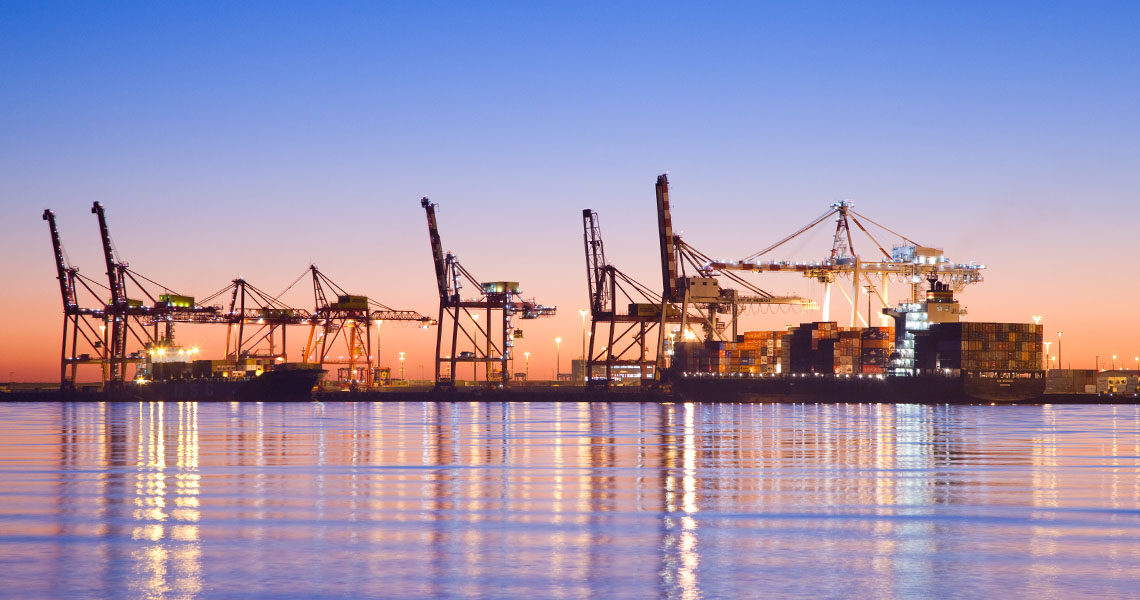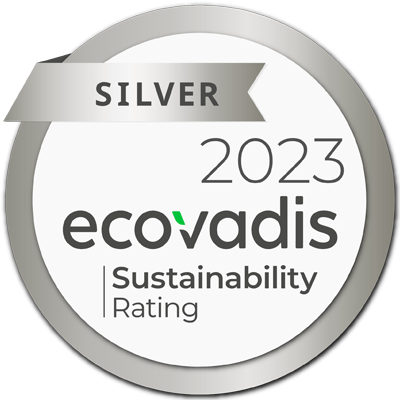Port Name: Brisbane Port
Location: Australia
Owner: HPH – Hutchison Port Holdings
Cranes Maker: Konecranes
Reeling Manufacturer: Cavotec SPECIMAS
Cable: TratosFlex ES-DB
Date installation: 2013
Tratos & Brisbane Port cooperation
Following the awarding of the contract to Konecranes to supply Automated Stacking Cranes (ASC) for two Hutchison Port Holdings (HPH) container terminals in Australia, Tratos is pleased to announce its Tratosflex-ESDB® cables have been specified by Konecranes for these prestigious projects. Tratosflex medium voltage rubber insulated and sheathed drum reeling cables have been specifically designed for high speed reeling and are regularly incorporated into Konecranes ASCs worldwide due to their reliability.
Tratosflex features a unique internal cable design, with the structure tightened against the internal relative movement. This prevents the cable from twisting and leading to possible breakage – extremely dangerous when reeling at speeds up to 300m/m. Tratosflex is already in use within Konecranes ASCs at HPH’s container terminal in Sydney’s Port Botany, New South Wales’ premier port and one of Australia’s major international container ports. The terminal began initial operations early November 2013 and when fully operational will have four shipping berths with a 1,300 metre quay and a total capacity of more than 1 million TEU per annum.
Brisbane Port
HPH’s Brisbane terminal, inaugurated on 23 January 2014, has a total area of 26 hectares, a total quay length of 660 metres and a depth alongside of 14 metres. Brisbane port is Australia’s fastest-growing container port.
The Port of Brisbane is a cornerstone of the Queensland economy – it is one of Australia’s fastest growing container ports and the state’s largest multi-cargo port.
Located at the mouth of the Brisbane River, Port of Brisbane is managed and developed by the Port of Brisbane Pty Ltd (PBPL) under a 99-year lease from the Queensland Government.
PBPL is owned by the APH Consortium (formerly known as Q Port Holdings consortium), comprising four of the world’s largest and most experienced infrastructure investors. The members are: Caisse de dépôt et placement du Québec; IFM Investors; QIC Private Capital Pty Ltd on behalf of its managed funds; and Tawreed Investments Ltd, a wholly-owned subsidiary of the Abu Dhabi Investment Authority.
Did you know?
Brisbane Port can be found in the lower part of the Brisbane River, on an artificial island known as Fisherman Island. We explore more of the port’s interesting history and facts in these 10 fast facts:
- The port is currently the third busiest port in Australia, and also the nation’s fastest-growing container port.
- The key commodities traded through the port include coal export, oil (crude and refined), and motor vehicle imports. It is also Australia’s largest exporter of meat and cotton. Brisbane Port’s major trading partners include North Asia, Southeast Asia, and East Asia, New Zealand, and the Gulf and Middle East regions.
- Until 43 years ago, the Port of Brisbane was underwater. This all changed in 1977 when after much work, 1800 hectares of new land were reclaimed from Brisbane River to turn Fisherman Island into the port we know and love today! This involved the building of a 5km causeway, a rail bridge to link the islands to the mainland at Lytton, and two road bridges.
- According to Brisbane Times, around 2750 ships come through the Port of Brisbane each year. There may also be an aircraft carrier or submarine that will turn up every once in a while.
- The visitor centre is seriously impressive! In fact, in 2005 a shorebird roost was constructed here, which is the largest site ever built specifically for migratory shorebirds on the east coast of Australia.
- While Brisbane Port as we know it today might not have been built yet, in World War II after Pearl Harbor was bombed on 7 December 1941, Brisbane became the busiest submarine port in the world. All the ships heading to Pearl Harbor were redirected to Brisbane and being close to where the American troops needed to be but still out of range of the Japanese bombers, meant Brisbane became host to over 75 000 soldiers.
- In 2014, the port became the first port in Australia where all the stevedores use automated container handling equipment. This followed the official opening of the Hutchinson Port Holdings which operated Brisbane Container Terminal at berths 11 and 12.
- In 2017, the Port of Brisbane received approval to deliver the Brisbane International Cruise Terminal. This is the first dedicated cruise facility in south-east Queensland that is able to accommodate mega cruise ships.
- Every year, nearly $50 billion in trade is handled through the port, which includes 95% of Queensland’s international container trade and around 50% of this state’s agricultural exports.
Despite the world and shipping industry being in lockdown at the time of writing, due to the COVID-19 pandemic, the port’s new multi-million dollar international cruise terminal is still set to open in October 2020. This new terminal will be able to accommodate some of the world’s largest cruise ships, such as Royal Caribbean International’s 293m-long Radiance of the Seas.
Tratos supports sustainable developments of ports infrastructure
Tratos is very pleased to supply its high-quality cables to the ports around the world. In doing so, Tratos supports the global endeavours of port authorities in upgrading and improving their operational capabilities, which contributes to the sustainable development of ports and achieving the 17 UN Global Goals.
With this project Tratos has supported:
#Envision2030 Goal 3: Good Health and Well-being
- By 2030, substantially reduce the number of deaths and illnesses from hazardous chemicals and air, water and soil pollution and contamination
#Envision2030 Goal 8: Decent Work and Economic Growth
- Achieve higher levels of economic productivity through diversification, technological upgrading and innovation, including through a focus on high-value added and labour-intensive sectors
- Improve progressively, through 2030, global resource efficiency in consumption and production and endeavour to decouple economic growth from environmental degradation, in accordance with the 10-year framework of programmes on sustainable consumption and production, with developed countries taking the lead
#Envision2030 Goal 11: Sustainable Cities and Communities
- By 2030, significantly reduce the number of deaths and the number of people affected and substantially decrease the direct economic losses relative to global gross domestic product caused by disasters, including water-related disasters, with a focus on protecting the poor and people in vulnerable situations
#Envision2030 Goal 14: Life Below Water
Targets
- By 2025, prevent and significantly reduce marine pollution of all kinds, in particular from land-based activities, including marine debris and nutrient pollution
- Minimize and address the impacts of ocean acidification, including through enhanced scientific cooperation at all levels










